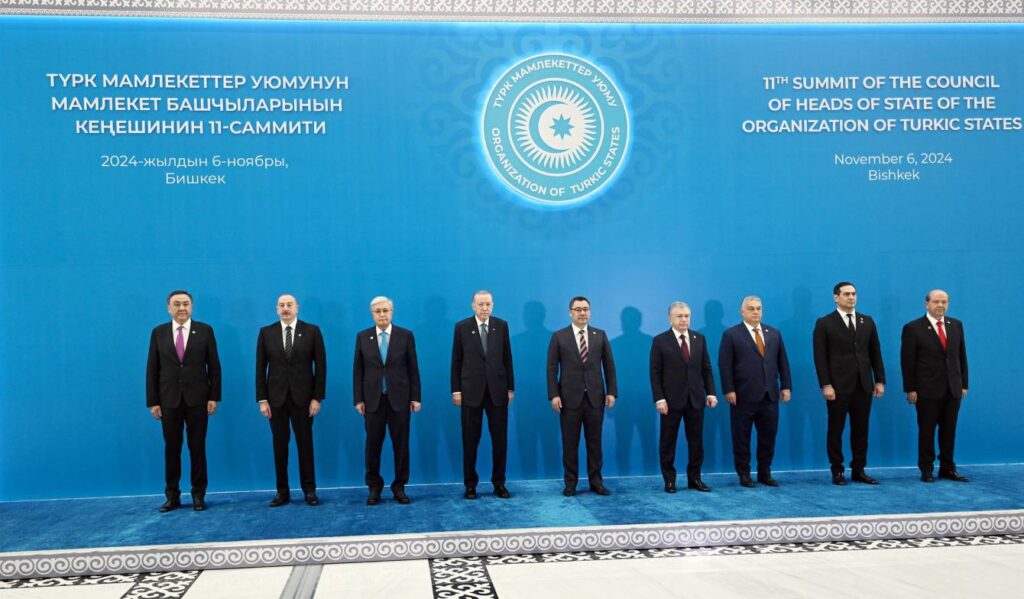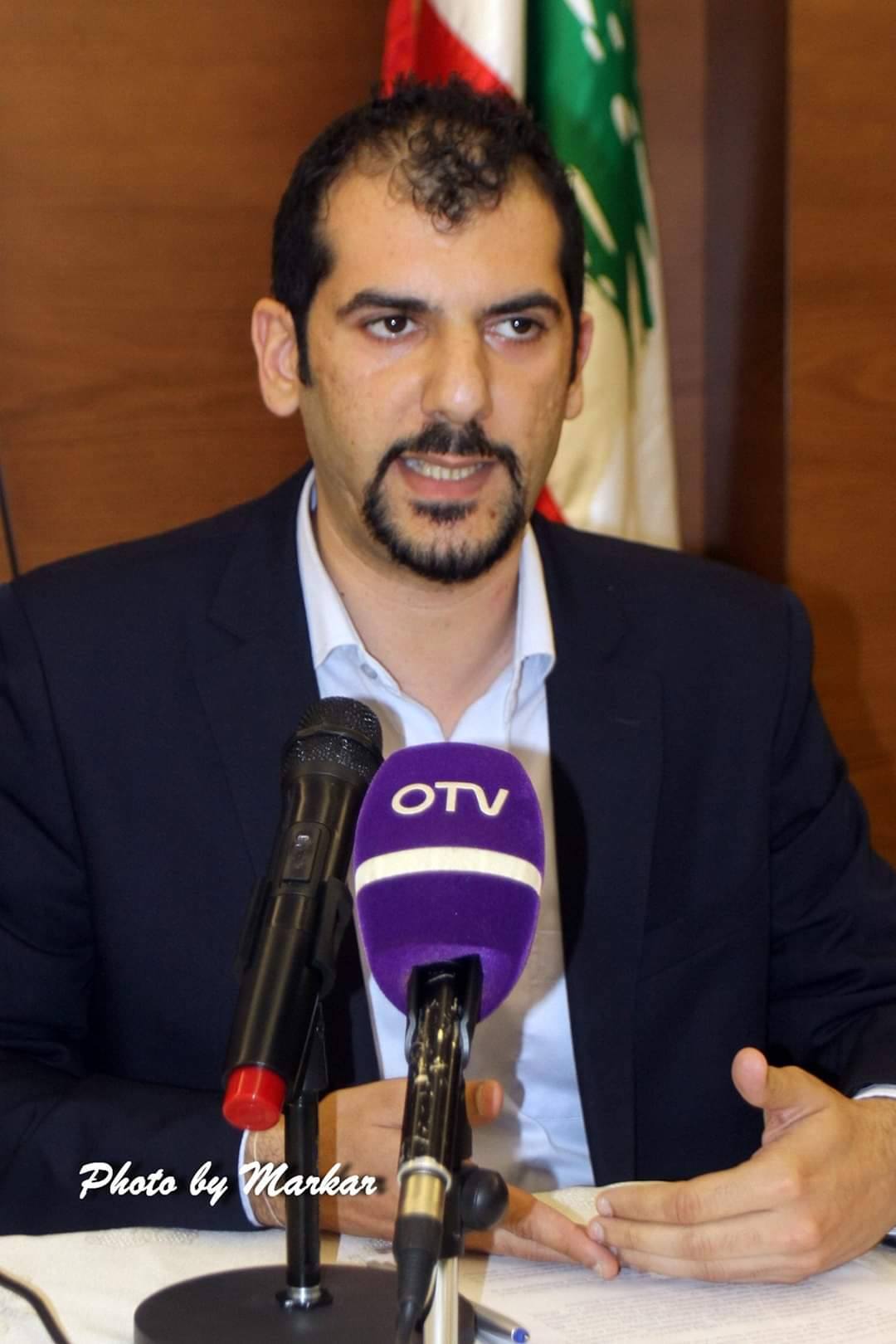
With the world’s focus on Russia and its war in Ukraine, China has been advancing its influence through the Belt and Road Initiative, amid Iran’s political and military withdrawal from the Levant. Turkey, through the Organization of Turkic States (OTS), has been expanding its footprint in Central Asia. Ankara aims to increase its political and economic influence over the region by promoting regional stability and building stronger ties. These objectives can be categorized as follows:
- Pan-Turkism: Turkey sees itself as the head of the Turkic-speaking peoples in the South Caucasus and Central Asia. Using various tools and strategies, Turkey aims to enhance its cultural, historical and linguistic ties. For instance, in September 2024, the Turkic Academy agreed on a common 34-letter alphabet that would help the 170 million Turkic people worldwide understand and cooperate with each other more effectively.
- The OTS is also another way for Turkey to position itself in a vital role amid regional political dynamics. Central Asia looks to balance relationships with Russia and China, while the U.S. is working to undermine their influence, making Turkey an appealing partner for Central Asian states that seek to diversify their foreign relations and avoid dependence on a single external power. These states engage in multilateral forums such as the OTS and strengthen bilateral ties, such as when Turkey and Kazakhstan signed a deal to become strategic partners.
- Energy-wise, Turkey also hopes to diversify its energy sources, and Central Asia appears to be the best fit for this role. Rich in natural resources, including gas and oil, Central Asia attracted Turkey to invest in projects such as the Trans-Anatolian Natural Gas Pipeline (TANAP). Turkey also hopes to establish itself as a regional transit hub by investing in roads, railways and pipelines.
- Turkey has signed several trade agreements with Central Asian countries to facilitate the transportation of goods, such as the Free Trade Agreement (FTA) with Kazakhstan in 2016 to trade machinery, electronics and textiles among other products. Turkish exports have seen a boost after discussions with other Central Asian states, such as the June 2024 agreement with Tashkent to deepen their strategic partnership.
- Finally, Turkey’s efforts to link the “Zangezur Corridor” to the “Middle Corridor” is of huge significance, further undermining Armenia to ease trade between Turkey and Azerbaijan. The link of these two corridors would also fuel Turkish influence in Central Asia, strengthening its ties with Azerbaijan while providing Central Asia with greater access to European markets and enhancing its own economic connections with these countries. This would also potentially reduce Russian and Iranian influence in the region.
Geopolitical motives behind the OTS
The outcome of the Artsakh/Nagorno-Karabakh war in 2020 triggered a new reality in the South Caucasus, shifting the balance of power to Turkey and Azerbaijan and facilitating further integration of OTS member states. According to Ziya Kazimzada, the organization has a significant geopolitical chance to contain Russian and Iranian influence. Additionally, there is a possibility of creating a “NATO zone” encircling Russia and encompassing Turkey, the South Caucasus and Central Asia, which would be in the interest of both the European Union and the United States. Iran and Russia are cautious about Turkey’s economic influence in Azerbaijan and Georgia, as well as its strategy to leverage this area for integration with Turkic-speaking Central Asian nations, Kazimzada argues. However, the war in Ukraine and the developments in the Middle East, especially in Syria, may prevent Moscow and Tehran from responding to Ankara’s geopolitical ambitions.
The OTS is a useful tool for Ankara in fulfilling its geopolitical objectives in the region. On November 12, 2021, the Heads of State of the OTS during their 8th summit endorsed the Turkic World Vision 2040, which contains key guidance and objectives related to political, security, economic, sectoral (including agriculture, health, energy and transport), people-to-people (including culture, education, youth, diaspora and media) and external party cooperation.
The OTS, formerly called the Cooperation Council of Turkic Speaking States, includes Turkey, Azerbaijan, Kazakhstan, Uzbekistan and Kyrgyzstan as well as observers Hungary, Turkmenistan and the Turkish-occupied zone of Northern Cyprus. Since its establishment in 2009, the OTS has aimed to institutionalize cooperation among member states through joint development projects and address regional and global issues faced by member states through a cooperative mechanism.
Its key objectives are summarized as follows:
- Promote Turkic culture and values and achieve unity in the alphabet. Empower diaspora communications to protect the Turkic identity and “act in unity in matters related to the Turkic World.” Establish a Common Turkic Information and Media Space by institutionalizing cooperation in media to tackle disinformation.
- Work together on international platforms and in the U.N. to suggest reforms.
- Build a network of cooperation and information sharing to combat “threats of radicalism, violent extremism, Islamophobia, xenophobia and terrorism and to ensure border security.”
- Accelerate transport operation along the Trans-Caspian International Transport Route, turning the region into an East-West economic transit hub and contributing to regional and global economic stability.
- Promote the establishment of economic zones and intra-regional investments.
- Jointly “promote Zangezur Corridor at various international economic platforms.”
- Develop strategic projects along the Baku-Tbilisi-Ceyhan, Baku-Tbilisi-Erzurum, Southern Gas Corridor and TANAP to provide alternative routes and contribute to European and global energy security. Institutionalize energy cooperation among member states and establish an integrated Turkic energy market.
- Strengthen ties among think tanks of the OTS and establish a “Turkic World Think Tanks Network.”
Can the OTS become a ‘Turkic NATO’?
Does the OTS have a security dimension? Vasif Huseynov from the AIR Center in Baku argues that the expansion of defense cooperation among OTS members reflects a desire to prioritize mutual security and strategic alignment. Turkey aims to integrate its defense industry with the defense infrastructure of member states. Azerbaijan is spearheading this idea, with President Ilham Aliyev stating during his re-election inauguration that the OTS would be a primary focus of his administration.
Interestingly, in December 2022, Kazakhstan and Uzbekistan signed the Treaty of Allied Relations, which upgraded bilateral ties and forbade joining a block or a union that threatens the other state. Huseynov draws a parallel between the Tashkent agreement and the Shushi agreement signed between Ankara and Baku in June 2021, where among other things, the parties pledged to support each other when one side is attacked. Turkish defense companies are also active in Azerbaijan and Kazakhstan and are eager to expand to other Turkic states.
However, forming a NATO-style alliance within the OTS is not an easy task. Russia, Iran, China and India would not accept the emergence of a strong military bloc in an energy-rich or key transit region. The ‘NATO-ization’ of the OTS is a long and difficult path. However, bilateral defense pacts between Ankara and Central Asian republics may not be an exception in the coming years. Still, the OTS remains a key regional and economic player alongside other economic and security blocs, such as the Russian-led Eurasian Economic Union and CSTO and the Chinese-led Shanghai Cooperation Organization, where some Turkic states are key members.
Reflection
Turkey is slowly testing the ground in the South Caucasus and Central Asia. First, it hopes to lobby for the success of the “Middle Corridor” and portray itself as the only land bridge connecting Europe to China, thus increasing its leverage over both actors. Second, it is pushing for the establishment of the ‘Zangezur Corridor’ to contain Iran and increase its influence in Central Asia. Turkey recognizes the important roles of Russia and China in the region and carefully navigates its relationships with these powers while maintaining its presence. The Middle Corridor in particular offers a strategic alternative to Russian dominance over the Eurasian trade routes.
Finally, Turkey will continue to integrate its military structure with those of Central Asia by organizing military exercises, providing military aid and conducting security agreements. The main long-term objective of Ankara and Baku is to establish a NATO-style security alliance of Turkic states. Some external actors may support this idea with the aim to contain Chinese influence, though whether Central Asia wants to be part of this containment strategy is questionable, given China’s growing economic influence and the political diversity and state systems in the Turkic world. While Turkey is experiencing a ‘golden era’ and extending its tentacles from Africa to Central Asia, it lacks (at least, without foreign backing) the resources to lead a security bloc and is not ready to confront Russia, China and Iran in a key strategic region, far from its immediate borders.



Be the first to comment